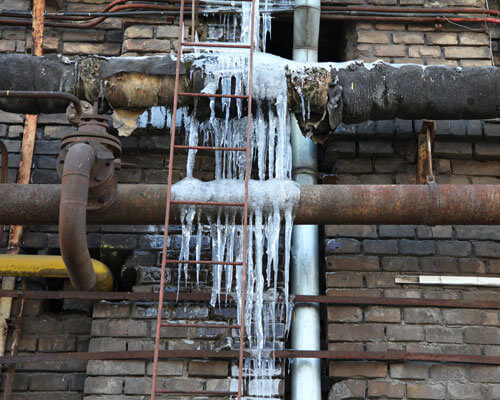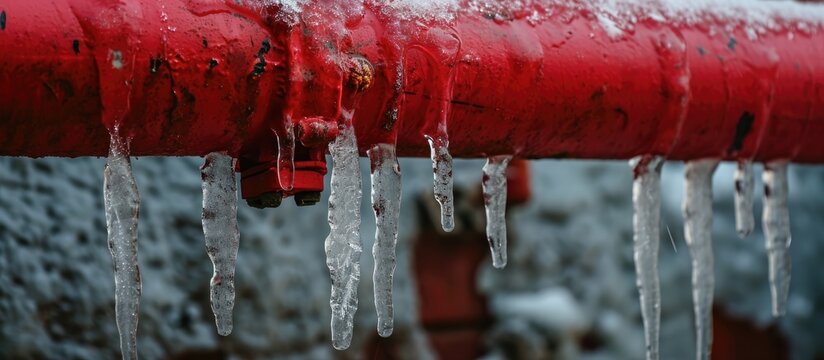Essential Advice to Prevent Frozen Pipes in Cold Weather: Professional Guidance
Essential Advice to Prevent Frozen Pipes in Cold Weather: Professional Guidance
Blog Article
On this page down the page you can discover a bunch of superb points related to How to Prevent Your Pipes From Freezing.

Winter can wreak havoc on your plumbing, specifically by freezing pipes. Below's how to stop it from happening and what to do if it does.
Intro
As temperature levels drop, the danger of icy pipelines increases, potentially bring about costly repair services and water damages. Recognizing how to prevent frozen pipes is crucial for property owners in cool environments.
Understanding Frozen Pipelines
What triggers pipelines to freeze?
Pipelines ice up when subjected to temperatures below 32 ° F (0 ° C) for extended periods. As water inside the pipelines freezes, it increases, putting pressure on the pipeline wall surfaces and possibly triggering them to rupture.
Threats and problems
Frozen pipes can lead to water supply disturbances, residential or commercial property damage, and expensive repair services. Burst pipelines can flood homes and trigger extensive structural damages.
Signs of Frozen Water Lines
Identifying frozen pipes early can stop them from bursting.
Exactly how to determine icy pipelines
Look for decreased water flow from taps, uncommon smells or sounds from pipelines, and noticeable frost on subjected pipelines.
Avoidance Tips
Shielding vulnerable pipes
Wrap pipelines in insulation sleeves or utilize heat tape to protect them from freezing temperature levels. Concentrate on pipes in unheated or exterior locations of the home.
Home heating strategies
Maintain indoor areas effectively heated, especially areas with pipes. Open cupboard doors to permit cozy air to circulate around pipelines under sinks.
Securing Outdoor Pipes
Garden hose pipes and exterior taps
Separate and drain pipes garden hose pipes before winter. Mount frost-proof faucets or cover outdoor taps with insulated caps.
What to Do If Your Pipes Freeze
Immediate actions to take
If you presume icy pipelines, maintain faucets open to relieve stress as the ice melts. Utilize a hairdryer or towels soaked in warm water to thaw pipelines gradually.
Long-Term Solutions
Architectural changes
Think about rerouting pipelines far from exterior wall surfaces or unheated locations. Add extra insulation to attics, basements, and crawl spaces.
Updating insulation
Buy premium insulation for pipelines, attics, and walls. Proper insulation aids preserve constant temperatures and decreases the danger of frozen pipes.
Final thought
Avoiding frozen pipes calls for proactive measures and fast feedbacks. By understanding the causes, signs, and safety nets, property owners can safeguard their plumbing during cold weather.
5 Ways to Prevent Frozen Pipes
Drain Outdoor Faucets and Disconnect Hoses
First, close the shut-off valve that controls the flow of water in the pipe to your outdoor faucet. Then, head outside to disconnect and drain your hose and open the outdoor faucet to allow the water to completely drain out of the line. Turn off the faucet when done. Finally, head back to the shut-off valve and drain the remaining water inside the pipe into a bucket or container. Additionally, if you have a home irrigation system, you should consider hiring an expert to clear the system of water each year.
Insulate Pipes
One of the best and most cost-effective methods for preventing frozen water pipes is to wrap your pipes with insulation. This is especially important for areas in your home that aren’t exposed to heat, such as an attic. We suggest using foam sleeves, which can typically be found at your local hardware store.
Keep Heat Running at 65
Your pipes are located inside your walls, and the temperature there is much colder than the rest of the house. To prevent your pipes from freezing, The Insurance Information Institute suggests that you keep your home heated to at least 65 degrees, even when traveling. You may want to invest in smart devices that can keep an eye on the temperature in your home while you’re away.
Leave Water Dripping
Moving water — even a small trickle — can prevent ice from forming inside your pipes. When freezing temps are imminent, start a drip of water from all faucets that serve exposed pipes. Leaving a few faucets running will also help relieve pressure inside the pipes and help prevent a rupture if the water inside freezes.
Open Cupboard Doors
Warm your kitchen and bathroom pipes by opening cupboards and vanities. You should also leave your interior doors ajar to help warm air circulate evenly throughout your home.

As a serious reader on How to prepare your home plumbing for winter weather, I thought sharing that editorial was important. Make sure you take the opportunity to distribute this page if you liked it. Many thanks for your time. Please check our site back soon.
Estimating Report this page